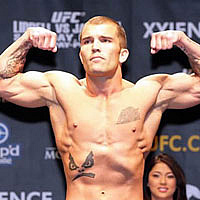
We all enjoy seeing true sporting genius at work - but for the yin of every Lance Armstrong, Roger Federer or Sammy Sosa out there, there's the yang of dreadful failure to bring some balance to the world of sport. Here, I pay homage to 10 of the greatest, most heart-wrenching and downright funniest moments when defeat was somehow stolen from the jaws of victory. It's the top 10 chokers of all time...
10. Houston Oilers: In an AFC wildcard game in 1993, the Oilers were responsible for the biggest in-game collapse in NFL history. They destroyed the Buffalo Bills in the first half to go in leading 35-3, but took choking to a whole new level by losing the game 41-38 in overtime. Ouch.
9. Gavin Hastings: Scotland's Mr Reliable had the chance to give his country a famous victory in the semi-final of the 1991 Rugby Union World Cup against old foes England. Hastings had possibly the easiest kick of his career in front of a home crowd at Murrayfield with a penalty smack bang in front of the posts with the scores tied at 6-6. Incredibly he dragged his kick wide, and Rob Andrew went on to nick it for England with a drop goal.
8. Devon Loch: Just 50m short of the line and with a seemingly unassailable lead in the 1956 Grand National, Devon Loch inexplicably decided to do the SPLITS and handed the race on a plate to ESB. Even after all these years, watching the video footage of that moment leaves me flabbergasted. Proof, if it were ever needed, that animals can choke too.
7. Greg Norman: Came up with the biggest choke in Masters history when, going into the final round at Augusta in 1996, the Great White Shark managed to blow a SIX-SHOT lead to hand the title to Nick Faldo. Norman's final-round 78 was even more remarkable when you consider the fact he had shot a course-record 63 just three days earlier.
6. Pittsburgh Penguins: The Penguins were showing the world how to throw away certain victory way back in 1975. They led 3-0 in their best-of-seven play-off series with the NY Islanders. If you didn't already know, you can probably guess what happened next - four straight defeats left the Penguins with egg on their faces.
5. Jana Novotna: The female tennis player came agonisingly close to a famous victory in the Wimbledon final of 1993. Novotna led the all-conquering Steffi Graf 4-1 in the final set and had a point on serve for a 5-1 lead - but double-faulted. The Czech chick choked as it all became too much for her. Ten minutes later and Graf had won the set 6-4 to take the title, leaving Novotna to famously cry on the shoulder of the Duchess of Kent. Women...
4. Doug Sanders: It was Open Championship heartache for Sanders at St Andrews in 1970 as he came within one shot of victory. He had a three-footer on the final green to wrap up a one-stroke win over Jack Nicklaus, but the pressure proved too much and the American lipped out. He went on to lose the play-off to Nicklaus the next day.
3. Scott Norwood: The Buffalo Bills went into Superbowl XXV as favourites to bet the NY Giants but, with eight seconds of the game left, they trailed 20-19. Up stepped Norwood for the chance to clinch victory for the Bills with a 47-yard field goal - and he bottled it big time, sending his kick wide right. Norwood now sells insurance in Virginia.
2. Jean Van de Velde: Teeing off at the 18th in the final round of the 1999 Open at Carnoustie, Van de Velde had one hand on the trophy knowing even a double bogey would give him the championship. Having birdied the same hole in his previous two rounds, what followed was a collapse of prodigious proportions. The Frenchman only just missed the water with his first shot, hit the grandstand with his second and landed in the burn with his third, where he ended up having to take off his shoes and socks to play the ball. He eventually managed to hole out for a triple-bogey seven before losing the play-off to a grateful Paul Lawrie.
1. NY Yankees: The Yankees produced one of the biggest collapses ever seen in the world of sport in 2004. The most successful outfit in the history of Major League Baseball were cruising at 3-0 up in play-off series against the Boston Red Sox but, when push came to shove, they lost their nerve - along with the next four games - to give the Red Sox their first World Series in 86 years.
Narrowing the list down to just 10 has proved incredibly difficult as there are countless other worthy contenders for the title of biggest choker in sport. Fire away with your favourites...








